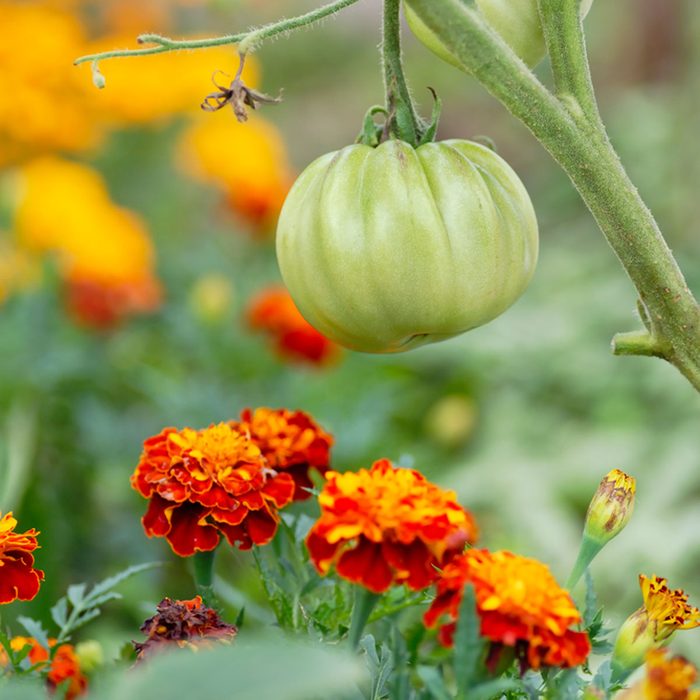
Tomatoes and Marigolds
Marigolds aren’t just ornamental, they also chase away destructive root-knot nematodes, microscopic worms in the soil that attack the roots of tomato plants. While you’re at it, add some basil to this companion planting. It’s well behaved and thought to improve the flavor of tomatoes. It can also be harvested simultaneously for salads.
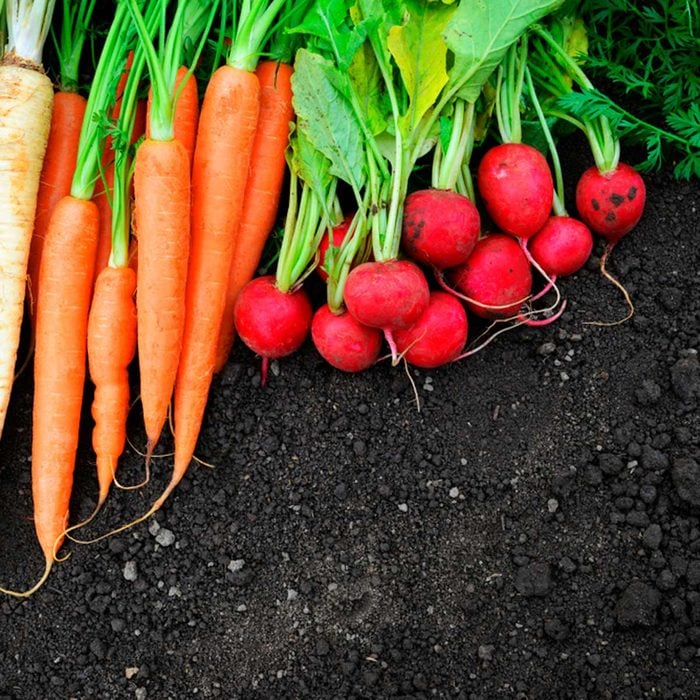
Radishes and Carrots
These two vegetables work well together in a companion planting because they’re on different schedules.
Radishes are the hare, going from start to finish in 25 to 30 days. Carrots are the tortoise, taking 60 to 80 days to mature. Sow the seeds of both together. When you harvest the radishes, it opens up space for the later-maturing carrots.
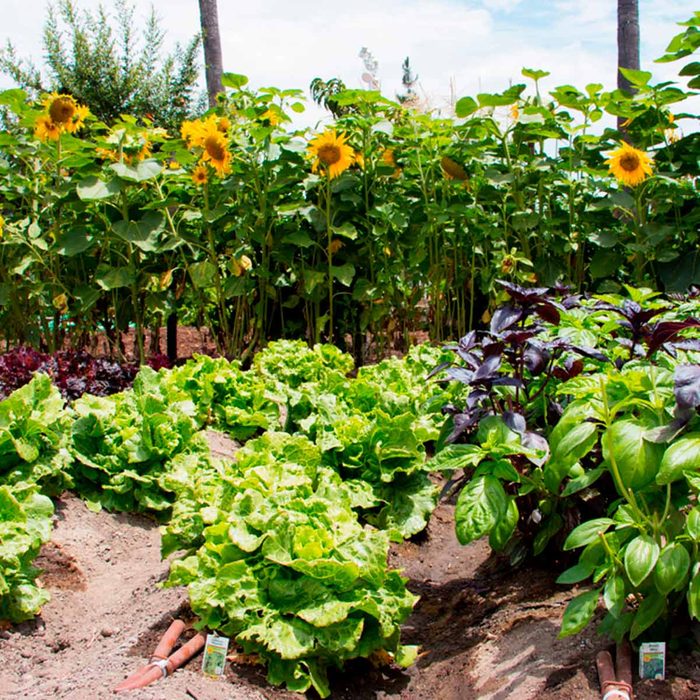
Lettuce and Basil
This is another pairing that works efficiently because the plants are on different schedules. The cool-season lettuce peters out around the time the basil is ready to soak up the heat of summer.
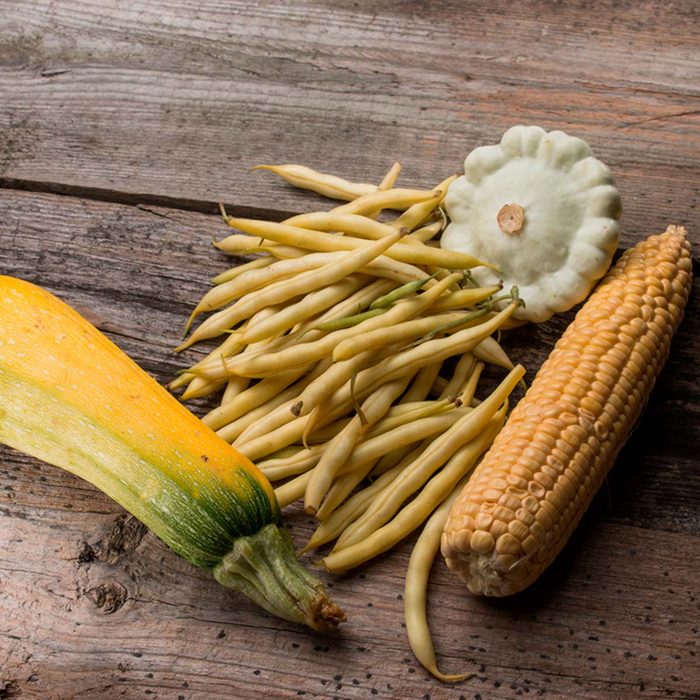
Green Beans and Corn
These make a good combination because the beans can climb the cornstalks for support without impeding their growth.
Beans also fix their own nitrogen from the atmosphere, meaning they can create nitrogen with the help of soil bacteria rather than needing nutrients from the soil. The extra nitrogen improves the soil for surrounding plants, in this case nitrogen-hungry corn.
Native Americans added a third plant — a sprawling squash vine that shaded out weeds beneath the corn and beans — and called the trio The Three Sisters.
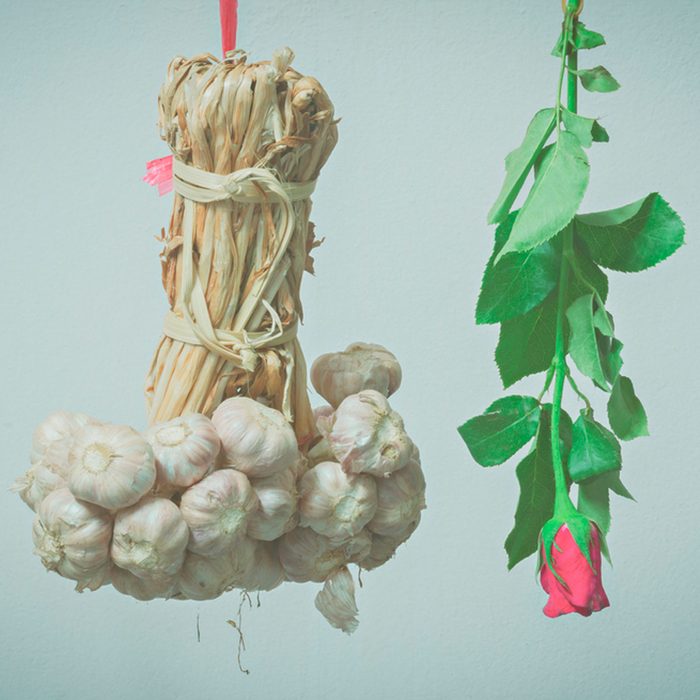
Roses and Garlic
The shorter garlic fills in nicely around the bare stems of rose bushes. More important to the success of this companion planting, garlic is said to chase away aphids, spider mites and especially Japanese beetles.
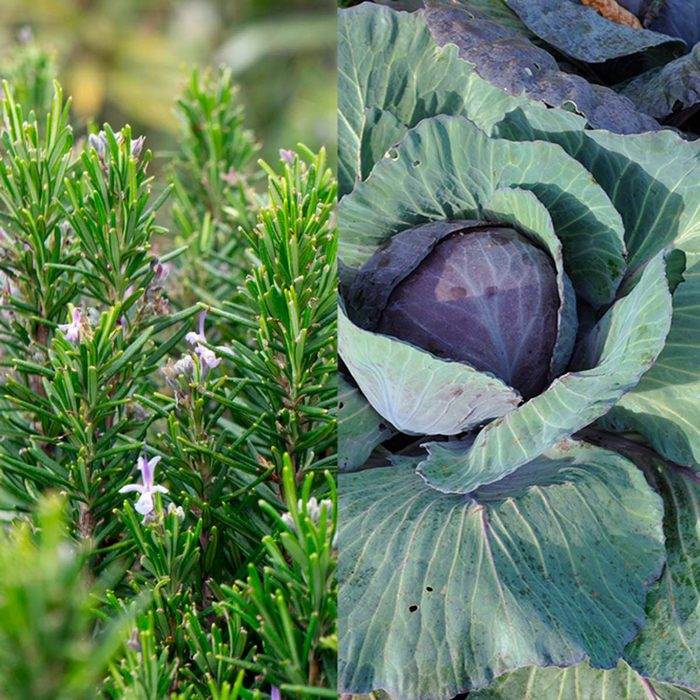
Rosemary and Cabbage
Rosemary is a strong-smelling herb (fortunately, it’s a good aroma!) that may confuse or distract cabbage moths from cabbage, kale or other cole crops.
Sage and mint are also reportedly ward off cabbage moths. Mint can be a garden bully by taking over in a hurry, so plant it in a container and bury the container to keep the roots from spreading.
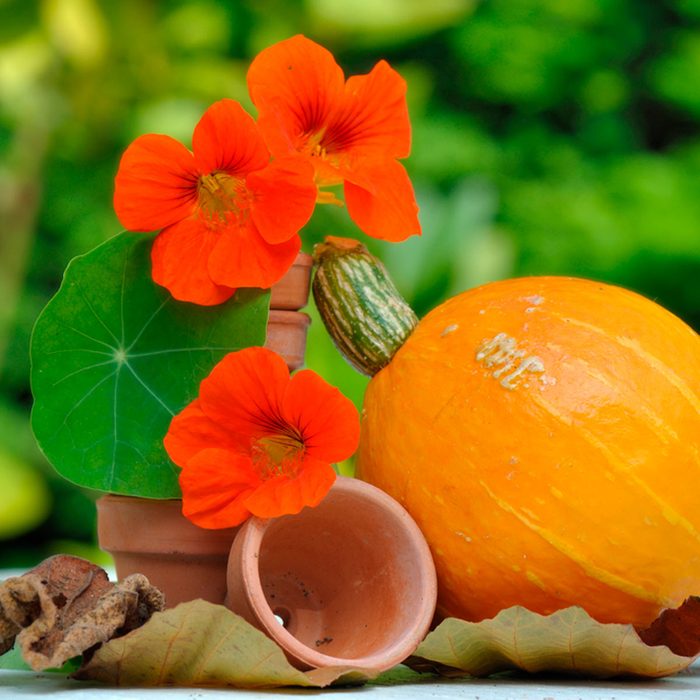
Nasturtium and Squash
Just like marigolds, colorful nasturtiums can bring an ornamental flourish to the garden while doing the heavy lifting on pest control. In this case, nasturtium guards against aphids and squash bugs. Bonus: Edible nasturtium flowers can be added as a salad topper.
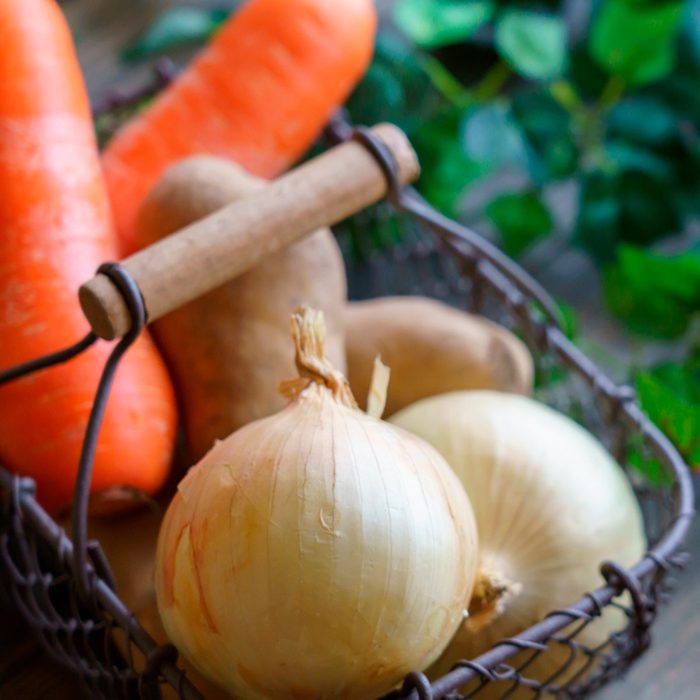
Carrots and Onions
This is another good pairing because the onions repel carrot flies and aphids. Leeks, rosemary and sage are also reputed to turn away carrot flies.
It makes sense, then, why elephant garlic — a cross between garlic and a leek — also repels carrot flies. Both carrots and onions grow better in a raised bed of rich, well-drained soil.
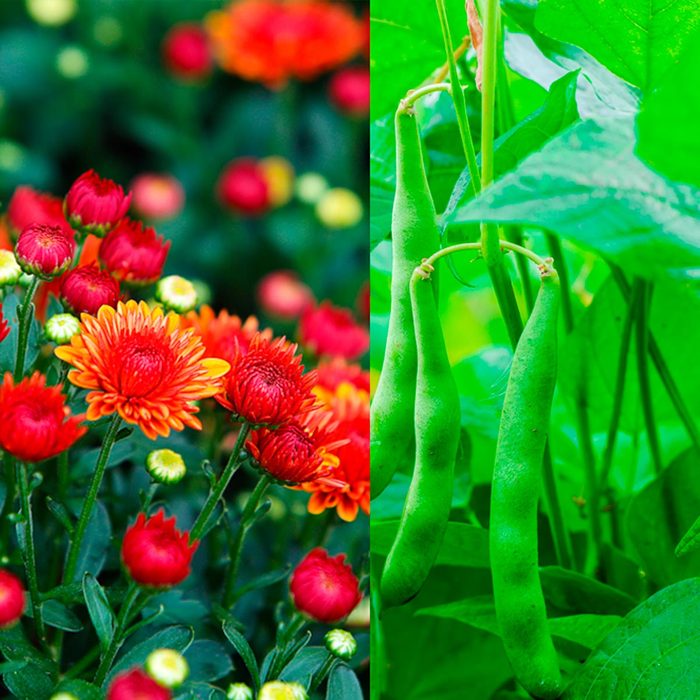
Mums and Beans
Intersperse chrysanthemums among bean plants to deter Mexican bean beetles. At the end of the season, when the beans are done, you’ll have something ornamental to look at.
Summer annuals like cosmos and marigold are also said to help control Mexican bean beetles.
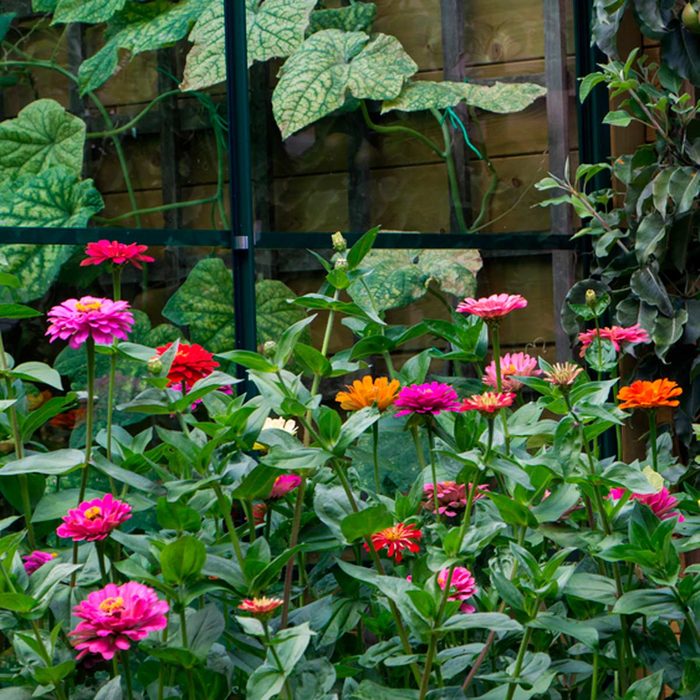
Zinnias and Vegetables
When used to rim the outskirts of the garden, tall zinnias block the view of the vegetables, creating a prettier view for people. They also serve as a barrier to deer, who don’t see the vegetables or don’t want to move through the zinnias to get to them. Jerusalem artichoke, cleome and other tall plants can also serve this purpose.